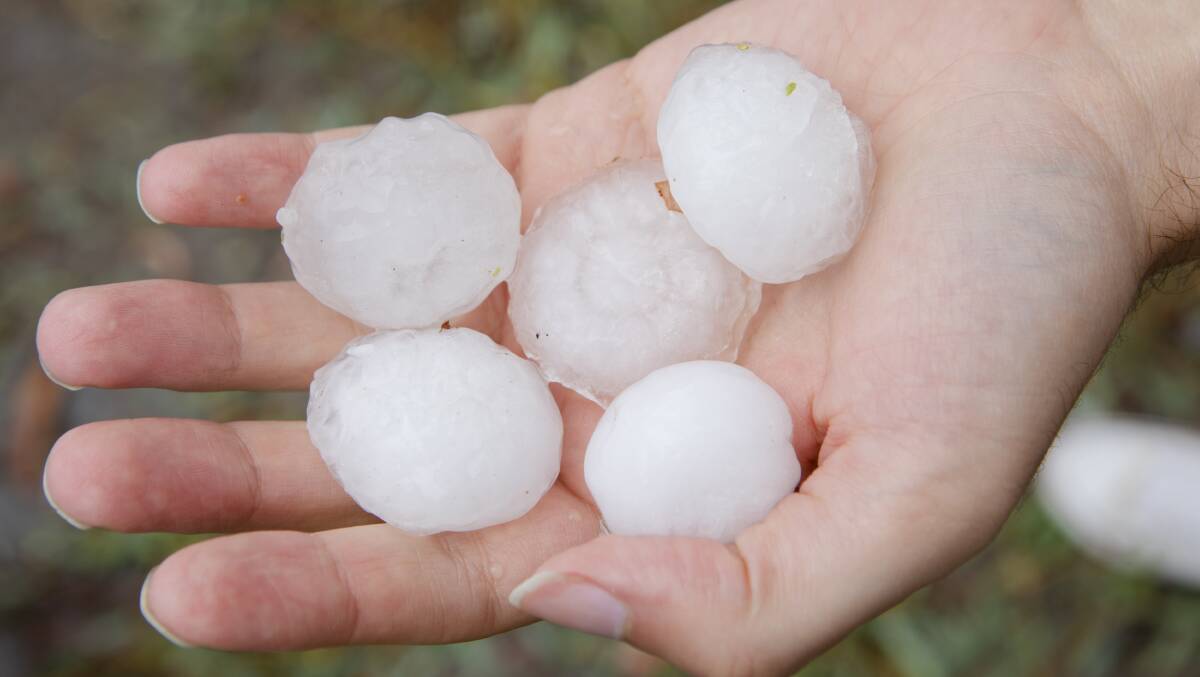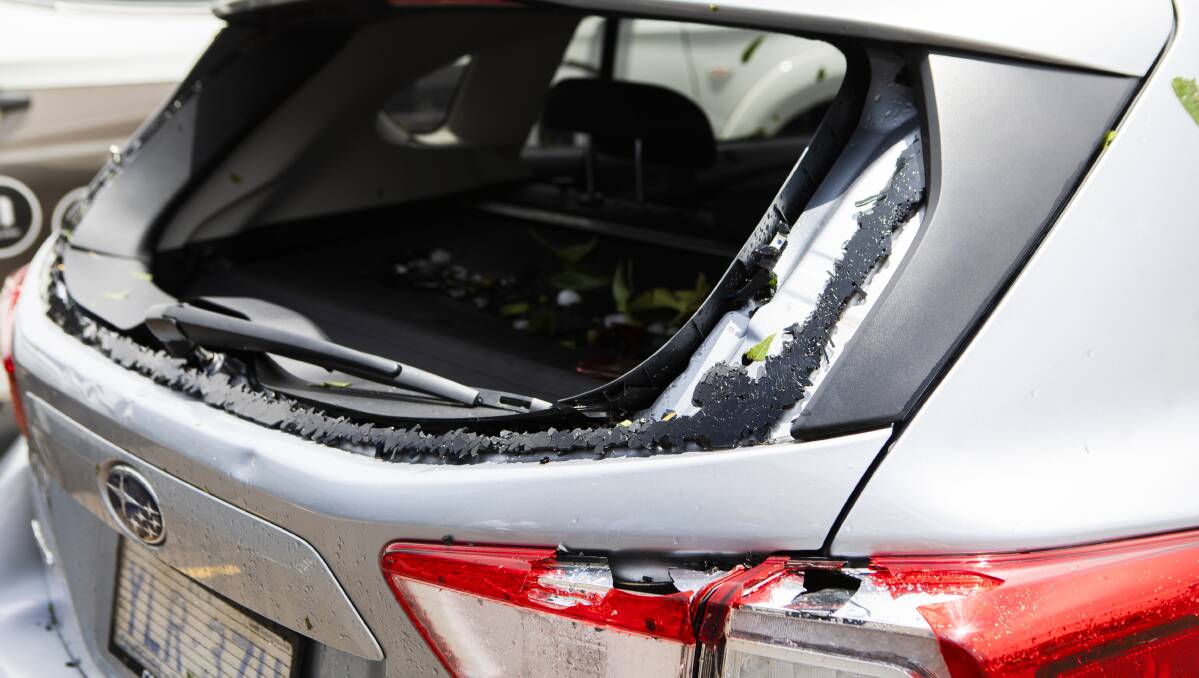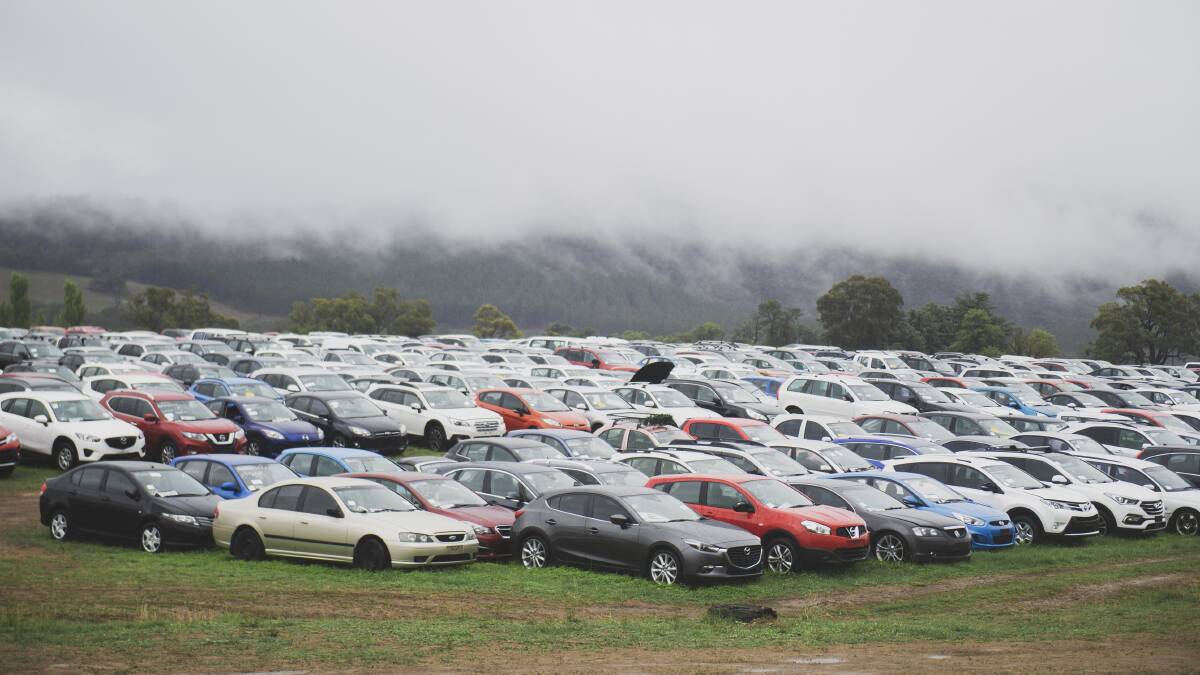
In less than 24 hours, the freak January hailstorm which swept through NSW, the ACT and Victoria in January resulted in $1.625 billion in insurance claims, with Canberra's damage accounting for more than half the claims submitted.
Subscribe now for unlimited access.
or signup to continue reading
The intense storm cell which swept into the territory from the north-west through Belconnen, across Black Mountain into Barton, Manuka, Griffith and then south-east through Fyshwick has been described by local weather watchers as one of the worst to hit the region in more than a decade.
The extreme weather event produced hailstones of 4 to 5 centimetres in diameter, propelled by wind gusts of up to 116km/h. The ACT State Emergency Service reported 1900 calls for assistance as cars, houses and commercial premises were belted by the intensity of the projectiles.
Cars were peppered and pockmarked by the hailstones, windows were smashed, buildings flooded and power cut. Even ACT Chief Minister Andrew Barr didn't escape the weather's vehemence, with the rear screen of his luxury car smashed.
The Winchester Police Centre in Belconnen flooded, and the damage to the nearby Traffic Operations Centre is still causing safety issues nine months later.
As of August 23, insurers had received more than 129,200 claims resulting from this single weather event.

Most of the 67,435 domestic motor vehicle claims - of which an estimated 38,000 were within the ACT and nearby region - have already been settled.
However, there are thousands of other claims including 52.7 per cent of business interruptions, still under negotiation, assessment or are yet to be lodged according to the most recent data supplied by the Insurance Council of Australia.
The council found that this single event was even larger than the freak storm which hit Sydney's metropolitan and regional areas on December 20, 2019. That event resulted in 143,000 claims with a total damages bill of $1.36 billion.
Bureau of Meteorology forecaster Jonathan How said a confluence of weather influences combined to create this event which hit Melbourne on the late afternoon of Sunday, January 19, then moved up to Canberra the next day.
"You need a combination of factors to create hailstones of this size; particles of some sort - dust or ice or snow - to be suspended in the upper atmosphere, together with super-cooled water to help them condense and grow," he said.
"Warm, moist air streaming down from the Coral Sea helped to feed the instability, and this interacted with a surface trough moving up from the south east, making things go a bit crazy over Canberra."
One of the nation's biggest insurers, the Insurance Australia Group, warned recently that weather events such as this will become more frequent with the ACT region one of the areas identified at risk.

"Hailstorms with large to giant hail - from 2 centimetres to above 5 centimetres in diameter - have already increased in frequency over south-east Australia," the report stated.
"In a warmer climate, the areas most at risk of these hailstorms will be further south including Sydney, Adelaide, Perth, Canberra and Melbourne.
"In particular, the inland region [of NSW] from the Hunter River, down through the central and southern highlands, and into central and eastern Victoria, will also be exposed to higher risk.".
Entitled Severe Weather in a Changing Climate, the report is based on the latest climate data and extreme weather event predictions, based on a range of warming temperatures.
IAG, whose insurance brands include NRMA and CGU, has processed more than 40,000 claims from the January 20 event with a net cost to the company of $169 million. Over 13,000 of the damaged vehicles in the ACT were insured by IAG.
Specialist hail assessment and repair centres were set up in Hume, Fyshwick and Mitchell in the aftermath of the storm, with massive storage areas set aside in Hume and Majura to hold seas of vehicles that had been "written off" by insurers ahead of national online hail sales.
The event created a mini economic boom for Canberra's car dealers, with the ACT recording strong sales and advance orders in complete contrast to the 20 per cent downward trend seen elsewhere in Australia as a result of the COVID-19 pandemic. Such was the impact of the storm that insurance-fed orders were still trickling into ACT showrooms in August.
IAG said that it still has customers whose vehicles were assessed, but were yet to book in their repair. As a result the company intends to keep its specialist hail centre operating in Hume until early January, almost a full 12 months since the original event.

